What comes to mind when you think about the AMS? Can you express it with an interesting and eye-catching graphic?
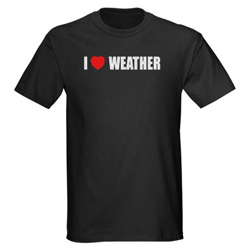
If so, then we have a contest for you: the Society is looking for a member to create an original design for a tee-shirt that represents the mission of the AMS. The winning shirt will be sold at the upcoming Annual Meeting in Austin, and the designer of the chosen shirt will receive free registration to that meeting. And as an added bonus, it’s all for a good cause: proceeds from sales of the shirts will be donated to the AMS Student Travel Grant fund, which helps senior undergraduate and graduate students attend AMS meetings.
The deadline is November 9, so it’s time to start thinking creatively, and then send your idea to [email protected]. The complete rules for the contest can be found here.
AMS News
AMS Dedicates 45 Beacon Room to Joanne Simpson
Last week, AMS held a ceremony at our 45 Beacon Street headquarters in Boston to celebrate the life and accomplishments of pioneer scientist Joanne Simpson. The AMS Council, AMS staff, and members of Joanne’s family gathered to watch the unveiling of her portrait that hangs in what is now “The Simpson Room.” The first woman to ever receive a Ph.D. in meteorology and first female AMS president, Joanne’s numerous contributions to science and the Society were lauded by current AMS President Louis Uccellini and Past President Peggy Lemone:
One of Joanne’s daughters was in attendance and Joanne’s husband, Robert Simpson, and three other children were able to view the ceremony through video conference. Robert had this to say:
On behalf of the Simpson family at large, I want to express our deep appreciation to the Society for its special recognition of Joanne Simpson with this unique posthumous award. All of us appreciate that you chose this unique way of further honoring Joanne. She served AMS nobly and effectively throughout her career—a career distinguished not only by her seminal contributions to tropical meteorology and the general circulation of the globe, but also her dedication to the role of women in science, showering them with encouragement, assistance in their efforts, and championing their struggle for recognition.
Simpson concluded by noting if Joanne had been given a choice she probably would have treasured this recognition by AMS even more than she did her Carl Gustaf Rossby gold medal award.
Broadcasters Bring it to Boston
Last week more than two hundred broadcasters made their way to the 40th Conference on Broadcast Meteorology in Boston. This was an impressive number of attendees given the unusual timing for a broadcast conference. With the approach of the peak of hurricane season, not to mention Hurricane Isaac, it’s typically not an ideal time for broadcasters to be away from their home bases. Yet, the chairs of the conference felt the significance of the 40th anniversary required a city of equal weight and were determined to make Boston work.
Here co-chair Rob Eicher, meteorologist at WOFL in Orlando, explains:
As one of America’s oldest cities, Boston is rich in meteorological history that goes back to 1774 when John Jeffries began taking daily weather observations. Co-chair Maureen McCann, meteorologist at KMGH in Denver, talks about this as well as other touchstones that make the city a meteorological hub:
Broadcasters attended two and half days of presentations covering topics such as regional weather, new technology, and science and communication. KWCH Wichita Meteorologist Ross Janssen, who had his first experience working as a meeting chair, talks about the hard work as well as the benefits of bringing the broadcast community together at an event like this:
A short course “From Climate to Space: Hot Topics for the Station Scientist,” covered both climate change and astronomy, and concluded with a nighttime viewing session at the Clay Center’s observatory in Brookline. Another highlight was a panel discussion on the emergent use of social media in the broadcast community. Afterward attendees made their way to Fenway Park for a night of baseball. If only the Red Sox hadn’t squandered their early lead to the Angels it would have been the perfect way to wrap up the Boston event.
AMS Releases Revised Climate Change Statement
The American Meteorological Society today released an updated Statement on Climate Change (also available here in pdf form), replacing the 2007 version that was in effect. The informational statement is intended to provide a trustworthy, objective, and scientifically up-to-date explanation of scientific issues of concern to the public. The statement provides a brief overview of how and why global climate has changed in recent decades and will continue to change in the future. It is based on the peer-reviewed scientific literature and is consistent with the majority of current scientific understanding as expressed in assessments and reports from the Intergovernmental Panel on Climate Change, the U.S. National Academy of Sciences, and the U.S. Global Change Research Program.
“This statement is the result of hundreds of hours of work by many AMS members over the past year,” comments AMS Executive Director Keith Seitter. “It was a careful and thorough process with many stages of review, and one that included the opportunity for input from any AMS member before the draft was finalized.”
The AMS releases statements on a variety of scientific issues in the atmospheric and related sciences as a service to the public, policy makers, and the scientific community.
A National Network of Networks: The Discussion Continues
by James Stalker, CEO, RESPR, Inc., and Chair, R&D/Testbeds Working Group for the AMS Ad Hoc Committee on a Nationwide Network of Networks
The National Research Council (NRC) report, titled “Observing the Weather and Climate From the Ground Up: A Nationwide Network of Networks (2009),” provided the vision and inspiration for building a team of volunteers from across all three sectors (government, academia, and private) that investigated the
suggestions recommended in the report. This team, comprising six (6) working groups (Organization and Business Models, Architecture, Measurements and Infrastructure, Metadata Policy, R&D and Testbeds, and Human Dimension), spent more than two years considering how to refine the recommendations and tackle the challenges identified in the original NRC report. They also identified other challenges in shaping this type of Nationwide Network of Networks (NNoN), which will be of critical importance to our country’s weather-ready future.
This volunteer team has published additional recommendations compiled into a draft report available at the American Meteorological Society website. Several drafts of this team’s report had been made available to the larger weather and climate enterprise community for comments over many months. The most recent and final version of the report reflects the community input. The readers of this blog are encouraged to read this final report and provide their comments to the Committee Chair and/or any of the Working Group Chairs of the Ad Hoc Committee on Network of Networks.
These volunteer efforts, to date, have certainly tried to solidify the interest of the various stakeholders in a network of this magnitude and of national importance but a lot more work remains to be undertaken. Unfortunately, many challenges remain unresolved. For example, wide-spread support hasn’t been secured for the idea of a central authority for an organizing body of the NNoN. Despite the best efforts by the volunteer team, an appealing organization and business model for such a central body has not been settled on going forward. Other challenges include establishing how to:
- make this organizing body an autonomous body that is not unduly influenced by any one sector,
- make this body a financially sustainable entity in the long run,
- reach all the major stakeholders and get them to support this idea and contribute to its success.
With respect to the third challenge listed above, many of the sought-after stakeholders may not be actively engaged in the weather and climate enterprise community activities and so finding effective ways to reach them becomes an even bigger challenge.
On a positive note, however, the NNoN efforts are going to be discussed again and support will be sought at the AMS Washington Forum in April 2012 and also at the Summer Community Meeting in August 2012 in Norman, Oklahoma. These two venues should prove quite useful for any interested Weather and Climate Enterprise participant and other stakeholders in the overarching effort to build a national asset that the current and many future generations will help nurture and benefit from.
Oh Weather, Where Is Thy Sting?
A word of warning to the victorious.
Election results are in, and as reported on the AMS web site, J. Marshall Shepherd of the Univ. of Georgia is our new President-Elect. He’ll become President for a year starting at the 2013 Annual Meeting.
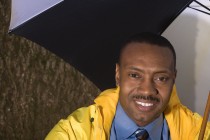
But…first, Shepherd must survive our upcoming meeting, which will transform the New Orleans Convention Center into a buzzing hive of meteorological activity.
The first big test of the President-Elect’s resolve will be the temptation to check out the poster by Paul Croft et al. on Monday 23 January (2:30 p.m.-4 p.m., Hall E) about how students have been tracking insect species as part of an overall study of cranberry bog restoration in New Jersey and how this might affect local weather. Then there’s a poster on Thursday (9:45-11 a.m., Hall E) by Sarah Tessendorf (NCAR) et al. on how pine bark beetles affect the microclimate (and ultimately snowpack) in Colorado mountain forests.
But the real test will be “The Vector Mosquito Aedes Aegypti At the Margins,” presented by Andrew Monaghan (NCAR) et al. Monday at 2 p.m. (Room 333). Monaghan and his colleagues have taken their research to the hinterlands to solve the question of what environmental and social factors affect breeding and movement of mosquitos carrying Dengue Fever.
Simple measures of temperature changes or degree days might work in tracking the behavior of some mosquito borne disease (like the outbreaks of West Nile Virus in the American Midwest), but they aren’t adequate in this sensitive climate-health interaction run amuck.
In the last decade, the Americas have experienced a dramatic increase in severe disease cases (dengue hemorrhagic fever), with devastating public health consequences. Of particular concern is the potential for the expansion of intense dengue virus transmission into cooler, high altitude cities that are presently outside of transmission zones but may be at risk under scenarios of climate change, such as Mexico City.
We’ll remind Dr. Shepherd that this research is no clean and pure modeling exercise: NCAR tells us that Monaghan and other researchers have been poking through trash such as old tires in Mexico looking for pools of water where mosquitoes might fester.
Because the dengue-carrying mosquito only breeds in urban areas, a key challenge is understanding how human behavior and infrastructure influence mosquito populations in combination with climate. Even if climate change eventually creates favorable conditions for the dengue mosquito’s survival in new areas, societal factors—such as the amount of time people spend outdoors, whether they use screens in their homes, and whether they have reliable access to piped water and municipal trash collection—may hinder the mosquito’s survival in new areas, or its ability to transmit dengue to humans.
Why recommend insect avoidance when it all sounds so intriguingly interdisciplinary? It turns out that Dr. Shepherd, who is well known for his research on climate and land surfaces, originally intended to be an entomologist:
It wasn’t a flash of inspiration but a rather a sting-a bee sting, to be exact-that got Shepherd interested in meteorology. [A]s a child growing up in Canton, Ga., he dreamed of becoming an entomologist. Discovering the hard way that he was allergic to bee stings led him to consider other options, and the success of a middle school science fair project-in which he constructed weather instruments from scratch and used them to forecast the weather in his neighborhood-revealed a talent that would blossom into a career.
Congratulations, Dr. Shepherd! And we promise not to bug you about this again.
AMS Climate Course To Reach 100 More Minority-Serving Institutions
The AMS Education Program has been awarded a grant by the National Science Foundation (NSF) to implement the AMS Climate Studies course at 100 minority-serving institutions (MSIs) over a five-year period. The project will focus on introducing and enhancing geoscience coursework at MSIs nationwide, especially those that are signatories to the American College & University Presidents’ Climate Commitment (ACUPCC) and/or members of the Louis Stokes Alliances for Minority Participation. AMS is partnering with Second Nature, the non-profit organization administering the ACUPCC.
“This national network involves more than 670 colleges and universities who are committed to eliminating net greenhouse gas emissions from campus operations by promoting the education and research needed for the rest of society to do the same,” explains Jim Brey, director of the AMS Education Program. “AMS and Second Nature will work together to demonstrate to current and potential MSI signatories how AMS Climate Studies introduces or enhances sustainability-focused curricula.”
In the first four years of the project, AMS will hold a weeklong AMS Climate Studies course implementation workshops for about 25 MSI faculty members. The annual workshops will feature scientists from NOAA, NASA Goddard Space Flight Center, University of Maryland, Howard University, George Mason University, and other Washington, DC area institutions. Faculty will initially offer AMS Climate Studies in the year following workshop attendance and colleges that successfully implement AMS Climate Studies will be encouraged to build a focused geoscience curricula area by also offering AMS Weather Studies and AMS Ocean Studies.
“The major outcomes of this project will be a large network of faculty trained as change agents in their institutions, sustained offering of AMS undergraduate courses within MSIs, and the introduction of thousands of MSI students to the geosciences,” comments Brey. He notes that this project builds on the success of similar NSF-supported programs for MSI faculty implementing the AMS Weather Studies and AMS Ocean Studies courses, which together have reached 200 MSIs and over 18,000 MSI students. “We’re looking forward to working with Second Nature to continue to expand the climate course and the education that it represents.”
New from AMS: Joanne Simpson Mentorship Award
The AMS has introduced a new award in recognition of the career-long dedication and commitment to the advancement of women in the atmospheric sciences by legendary pioneering meteorologist Joanne Simpson.
The new Joanne Simpson Mentorship Award recognizes individuals in academia, government, or the private sector, who, over a substantial period of time, have provided outstanding and inspiring mentorship of professional colleagues or students. The award is separate from the honor bestowed upon exceptional teachers mentoring students, which is covered by the AMS Teaching Excellence Award.
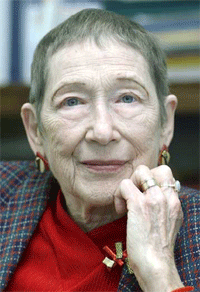
Simpson was the first women to earn a Ph.D. in meteorology, and her distinguished achievements include creating nearly singlehandedly the discipline of cloud studies, determining the source of heat energy that drives hurricanes, and leading a decade-long effort at NASA that culminated in establishment of the ground-breaking Tropical Rainfall Measuring Mission (TRMM). Her career spanned more than 50 years, during which she challenged the male-dominated establishment in meteorology and fought for equal footing for women in the sciences. Although she passed away nearly a year ago, her enduring spirit continues to pave a pathway forward for other women pioneers in meteorology and the related sciences.
As with all AMS awards, nominations for the Joanne Simpson Mentorship Award are considered by the AMS Awards Oversight Committee.
Online submission of nominations for the new award will be accepted until May 1. The first Joanne Simpson Mentorship Award will be presented at the 2012 Annual Meeting in New Orleans.
The Weather Museum Names Its 2010 Heroes
The Weather Hero Award is given to individuals or groups who have demonstrated heroic qualities in science or math education, volunteer efforts in the meteorological community, or assistance to others during a weather crisis. The 2010 Weather Heroes honored were the American Meteorological Society, KHOU-TV in Houston, and Kenneth Graham, meteorologist-in-charge of the NWS New Orleans/Baton Rouge office.
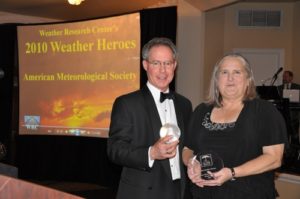
The AMS was recognized for developing and hosting WeatherFest for the past ten years. WeatherFest is the interactive science and weather fair at the Annual Meeting each year. It is designed to instill a love of math and science in children of all ages, encouraging careers in these and other science and engineering fields. AMS Executive Director Keith Seitter accepted the award on behalf of the Society. “While we are thrilled to display this award at AMS Headquarters,” he comments, “the real recipients are the hundreds of volunteers who have given so generously of their time and have made WeatherFest such a success over the past decade.”
KHOU-TV was honored for hosting Weather Day at the Houston Astros baseball field in fall of 2010. Weather Day was a unique educational field trip and learning opportunity that featured an interactive program about severe weather specific to the region. Over the course of the day, participants learned about hurricanes, thunderstorms, flooding, and weather safety—highlighted by video, experiments, trivia, and more.
Graham received the award for his support of the Deepwater Horizon Oil Spill cleanup. As meteorologist-in-charge of the New Orleans/Baton Rouge forecast office in Slidell, Louisiana, Graham started providing weather forecasts related to the disaster immediately following the nighttime explosion. NWS forecasters played a major role protecting the safety of everyone working to mitigate and clean up the oil spill in the Gulf of Mexico.
The awards were presented at the center’s third Annual Groundhog Day Gala and its fifth annual Weather Hero Awards on 2 February 2011.
The Weather Research Center opened The John C. Freeman Weather Museum in 2006. As well as housing nine permanent exhibits, the museum also offers many exciting programs including weather camps, boy/girl scout badge classes, teacher workshops, birthday parties and weather labs.
Uccellini Is AMS President-Elect
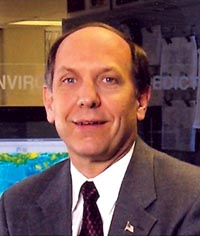
With a huge snowstorm blowing through the northeast United States, it seems an appropriate time to announce that Louis Uccellini has been voted the new AMS president-elect. The director of the National Weather Service’s National Centers for Environmental Prediction, Uccellini has coauthored two acclaimed AMS books on just the kind of snow the Northeast received today: Snowstorms Along the Northeastern Coast of the United States: 1955 to 1985 and Northeast Snowstorms. Uccellini will take over as AMS president in January 2012.
Four new councilors were also chosen in the elections: Peter J. Lamb, Patricia A. Phoebus, William L. Read, and H. Joe Witte. They began their three-year terms in January.
The AMS congratulates all the winners!